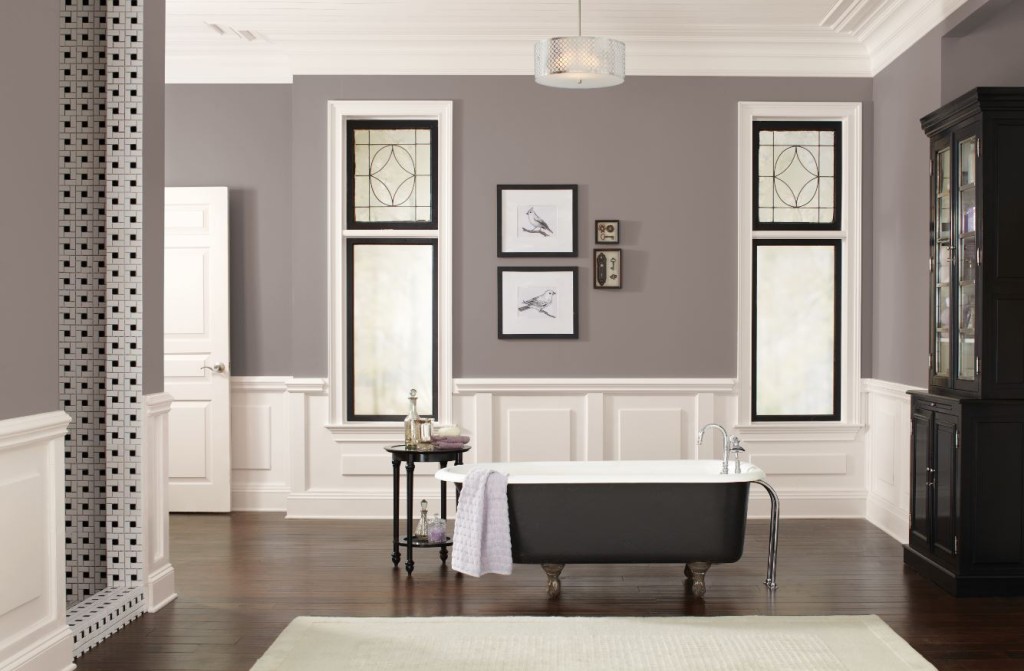Choosing colors that sell homes
 Conventional wisdom says it’s “location, location, location” when you’re looking to buy a home. However, that statement might take on an entirely different hue when it comes to selling one.
Conventional wisdom says it’s “location, location, location” when you’re looking to buy a home. However, that statement might take on an entirely different hue when it comes to selling one.
In a competitive housing market, it’s important to seize every advantage. Can exterior color make a difference? That is the million-dollar question.
“True, location is an important factor, but the aesthetics of a home, especially the exterior color, can make a difference if a buyer is on the fence,” said Bob Hertzog, a designated real estate broker and owner of Summit Home Consultants in Phoenix, AZ.
“I had a listing in north Scottsdale last year, and the home was painted a burnt-orange color,” Hertzog said. “There’s no doubt in my mind— based on the feedback I received from agents that showed the home—that the paint color was a major factor in the time it took to get the property sold. We finally got it sold, but only after the seller agreed to an $8,000 credit at the close of escrow so that the buyer could repaint the home when they moved in. Sadly, the seller just had the home painted six months prior.”
THE POWER OF COLOR
Sue Wadden, director of color marketing at Sherwin-Williams, is intimately aware of the power of color.
“Of course, it’s well known that color can influence a person’s mood, and its affect on an individual is heavily considered and thought through in the design process,” Wadden said. “Confident color selection is anything but random —rather, a very thoughtful process that leads to evoking a certain attitude or emotion that, importantly, can also influence a person’s behavior.”
Wadden says this is especially true in a home setting. “If a buyer sees move-in-ready color, then builders and painters typically see a bigger bottom line. Color is a powerful tool that puts the buyer in the space, planning how they will live, and provides an emotional connection, a key to securing the asking price from a home —and then some.”
Jessamy Tsoris, a Milwaukee-based color consultant and owner of Color Zen, equates dressing a home for sale much like you would prepare for an important job interview. “You should always wear a color that’s powerful, flattering, and typically classic,” Tsoris said.
“For your home, it’s less about selecting the neutral everyone is blogging about and more about what truly complements the home’s unique lighting and surfaces, especially wood tones. Generally, light, bright and airy neutrals leaning gray and/or coastal are popular at the moment. You want the home to look as modern as possible.” and soft sage. Violet as well—many shades, from murky plum to gray-violets to red-violets.”
THE ART OF SELLING
Back to the million-dollar question: Can paint color truly help sell a home?
Wadden thinks so. “The most obvious benefit to painting your house is elevating the curb appeal. Color can be such a key differentiator,” Wadden said. “Think of homes with great style … the exterior is the first glimpse of what we see in a home—sort of an indicator as to what’s inside. Great exterior color can tell a story, as well.”
When advising a homeowner on color choices, Wadden likes to play up significant architectural details on a house.
“Maybe a home has incredible trim and a bold, unexpected color is a great way to play that up,” she said. “Does the home have a gorgeous front porch? Try painting a daring and vibrant color on the porch ceiling. Playing up key features can be a really distinctive way to make a bold impression.”
Ironically, Tsoris says many of her clients will tell her they’re not into trends.
“However, when we browse photos, almost 100% of them will ooh and aah over new homes with contemporary decor they would never allow themselves to like if selected independently,” she said. “Humans respond to change and trends in interior design—period. It keeps things exciting.
When I started Color Zen, we were nearing the end of the Tuscan palette; warm tans, red, gold, yellow/green. We went crazy during that period with accent walls and a new hue in every room. Then we cleansed the palette with light coastal neutrals, taupe, gray, white, blue and an occasional color pop. This is where we’re at today, but new creative choices are creeping into the gray zone. Every year, I notice shifts in overall color selections. It is ever-changing for sure.”
FINAL TOUCHES
When talking to a customer, both Macedo and Tsoris say it’s important to spend time listening.
“About 80% of my time is spent listening to my customer,” Macedo said. “I find out what they want and need. Then the other 20% of my time is used to help educate them on the colors and products.”
Tsoris says to be open to incorporating each customer’s unique perspective on color.
“Try to gently nudge customers who are stuck in their comfort zone,” Tsoris said. “Show them photos of beautiful rooms that showcase colors they might not have considered, but that could work in their space. Develop the right approach for communicating so you’re not pushy, yet firm enough to be heard and respected. When clients and peers challenge me, I always say ‘I stand by my selections.’ And I do. Believe in your power to help people build beautiful spaces—it’s a moving process.”
Finally, Wadden believes it’s critical to counsel your customer about color selection, in order to help to minimize repaints and increase customer satisfaction.
“Being knowledgeable about color can also differentiate you from the competition and help establish yourself as a trusted resource, ultimately leading to more repeat and referral business.”




